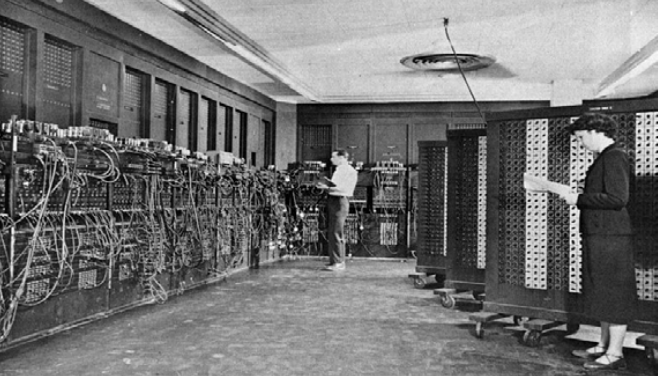The history of computing reflects the ongoing evolution of technology that shapes our world today. From the abacus, one of the earliest tools for calculation, to modern operating systems that manage our devices, the development of hardware and software has transformed how we interact with technology. In this article, you’ll explore this journey and the impact these elements have on our daily lives, as well as how advancing these technologies is essential for the future of computing.
The Evolution of Computers: From the Abacus to ENIAC
The use of calculation tools dates back to ancient Mesopotamia, where the abacus was one of the first counting tools in the decimal system. However, the real start of modern computing began with ENIAC (Electronic Numerical Integrator and Computer), one of the first computers of the 20th century. Weighing about 18 tons and capable of performing around 4,500 calculations per second, ENIAC represented a revolution in handling complex calculations. While limited compared to today’s standards, it marked the beginning of automated calculation.
Image 1: Abacus

Image 2: The ENIAC

Operating Systems: The Transformation of Hardware with Software
Over time, computer operations evolved, requiring less direct interaction and enabling the development of the first operating systems. These software solutions were essential for managing system resources and simplifying user interaction with hardware, allowing repetitive tasks to be automated with increased precision. An example of this evolution is the introduction of alphanumeric keyboards and monitors, which brought more accessible interfaces to the public.
The Interdependence of Hardware and Software: How They Grow Together
Throughout computing history, hardware and software have evolved hand-in-hand. As hardware improves, software must be adapted and updated to leverage new features. Similarly, as software becomes more complex and demanding, it drives the development of more powerful hardware, such as next-generation processors and larger storage capacities.
Classification of Software and Its Application in Everyday Life
Software evolution also brought different types of programs, each with a specific function:
- Embedded Software: This type is used in devices we don’t typically think of as computers, like cars and household appliances. Examples include fuel sensors in cars and control systems in refrigerators.
- Free Software: These programs are freely distributed, allowing users to copy, modify, and share them without cost, like Linux. They contrast with proprietary software, which requires payment or permission from developers to use.
- Basic Software: These essential programs control the computer’s hardware behind the scenes, such as BIOS (Basic Input Output System), which manages hardware, and operating systems, which oversee the computer’s overall functionality.
The Importance of Understanding Hardware and Software for IT Professionals
For IT professionals, mastering hardware and software concepts is crucial. This in-depth knowledge helps solve problems efficiently and maximizes system potential. Furthermore, staying updated with technological innovations and emerging solutions can set a professional apart, making them more prepared to tackle the challenges of a fast-changing field.
Modern computing, driven by the development of hardware and software, is present in nearly every area of human life. From simple tasks like using a smart coffee maker to complex operations like computer-assisted surgeries, we rely on these technologies to streamline and improve our daily lives. Studying the history and evolution of these elements offers insight into how technology continues to shape the future and open up new possibilities.
Flashcards:
Did you enjoy this article? For more content on the history of computing and tech innovations, sign up for our newsletter!

